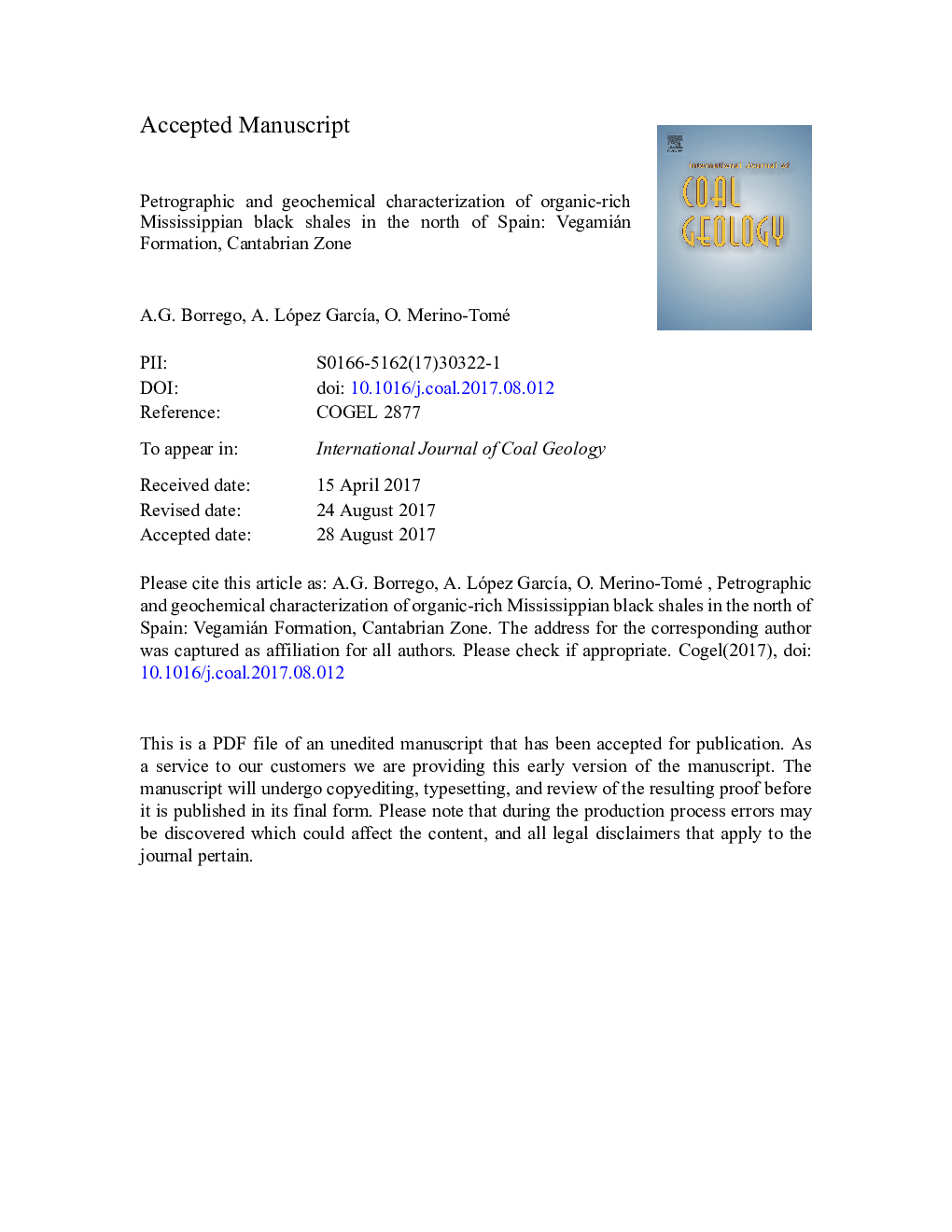| Article ID | Journal | Published Year | Pages | File Type |
|---|---|---|---|---|
| 8123442 | International Journal of Coal Geology | 2018 | 68 Pages |
Abstract
The organic matter is dominated by bitumen found either as diffuse masses, or concentrated in spaces and cavities, often parallel to the bedding planes or filling voids within calcite veins and fractures. Generally, the bitumen masses are homogeneous without secondary porosity, but occasionally they show mosaic optical texture indicating thermal transformation. Anastomosing structures, likely related to bituminite, are also common, and exhibit a large range of reflectances. Autochthonous organic matter (algae/bacteria) is seen as scarce Tasmanites and liptodetrinite, whereas allochthonous components (vitrinite, inertinite) are also scarce, except in the Olleros section. The range of reflectances of vitrinite-like particles is similar to that of bitumen but the identification is uncertain and therefore the reflectance of bitumen (BRr) has been used for thermal maturity assessment. A Gaussian-like distribution of bitumen reflectances was found for La Braña section (BRr = 0.70%), whereas a bimodal distribution was observed in Olleros (BRr = 0.70%) and Vegamián sections (BRr = 0.95%) and large scatter of readings in Millaró (BRr ~ 1.55%). The vitrinite reflectance equivalent estimated from aromatic compounds indicates that most of the existing correlations between vitrinite and bitumen reflectances underestimate the maturity of the lowest reflecting sections and overestimate it in the highest reflecting one. TS/TOC ratios, the geochemistry of organic matter and spectral gamma ray measurements suggest a normal marine to dysoxic environment of deposition with only local anoxia at the base of the Vegamián Formation.
Related Topics
Physical Sciences and Engineering
Earth and Planetary Sciences
Economic Geology
Authors
A.G. Borrego, A. López GarcÃa, O. Merino-Tomé,
